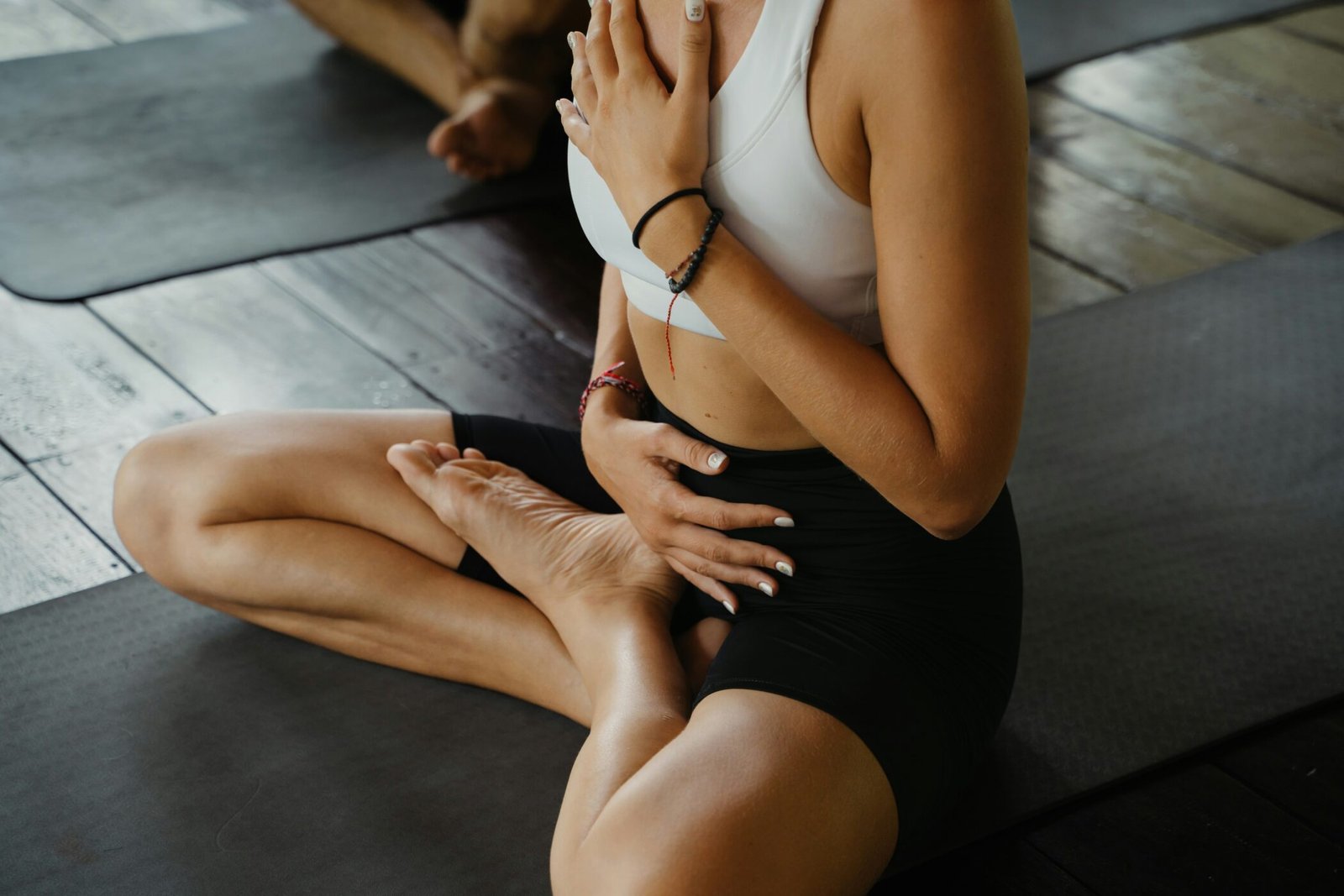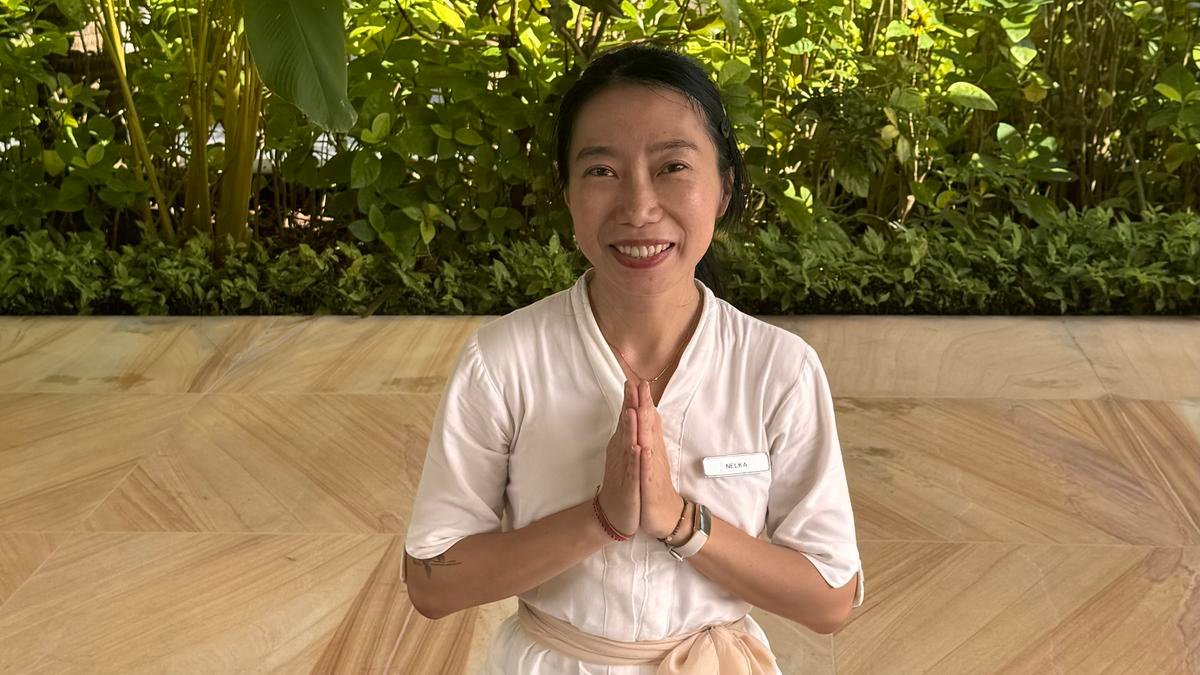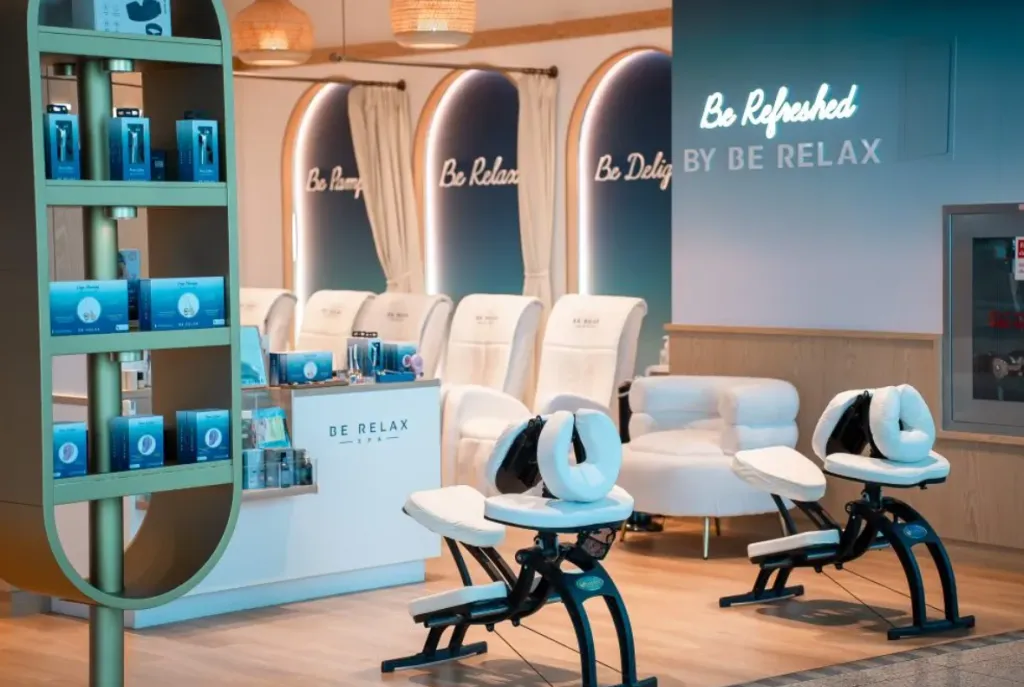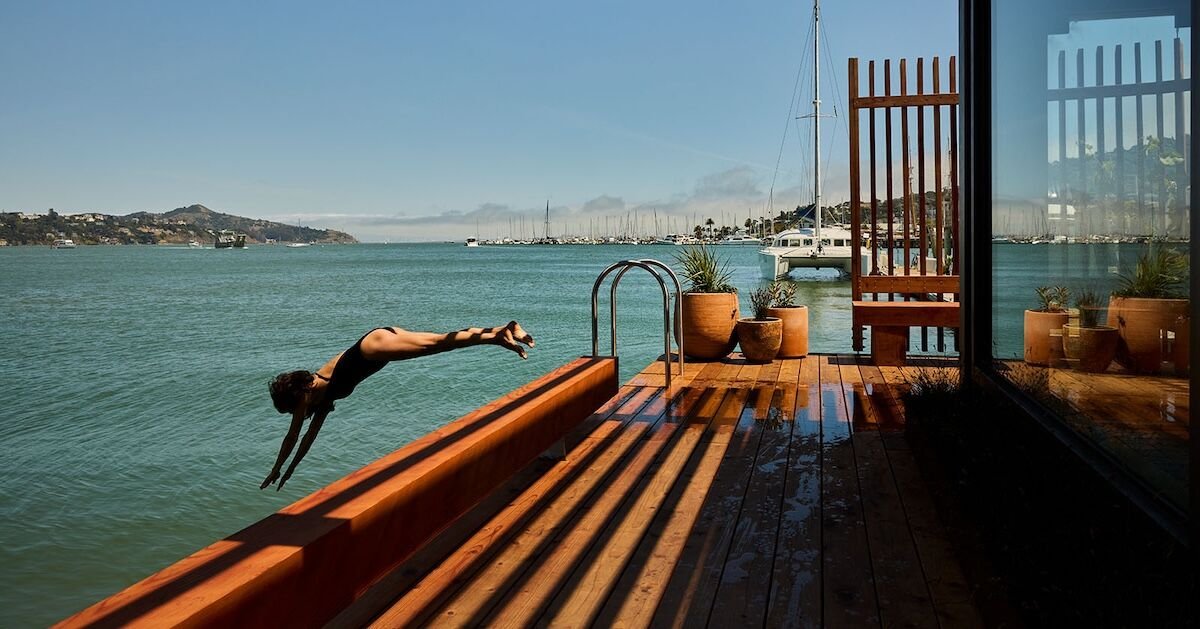Wellness Travel
Deepak Chopra to Launch Wellness Innovation Hub in Utah

Deepak Chopra is launching a $180 million wellness resort in Utah that will integrate geothermal healing, luxury living and AI-powered health technology. Robbie Hodges reports
The wellness pioneer Deepak Chopra has announced plans to develop a new wellness hospitality and real estate concept called Ameyalli, in the Wasatch Back region of Utah. Slated to be completed in phases by 2026, Ameyalli will encompass a 50,000-square-foot wellness centre, geothermal hot springs, 24 private villas, cottages, family lodges and an 80-room boutique hotel.
The site, which is being developed with the support of real estate developer Charles Heath to the tune of US$180 million, will also become the North American headquarters of the Chopra Foundation and the primary location for Chopra’s latest initiatives in wellness science and digital health.
Chopra, aged 77, is one of the most recognisable figures in the wellness world. A former physician, he has authored over 90 books on topics ranging from mindfulness to Ayurvedic medicine. Through the Chopra Foundation and Chopra Global, he continues to push boundaries in integrative health and self-care.
At the heart of the development is the Ameyalli Wellbeing Center, designed to offer healing therapies grounded in Chopra’s “Seven Pillars of Wellbeing” philosophy – emotional regulation, mindfulness, sleep, movement, relationships, laughter and nutrition. Historic hot springs, estimated to be 5,000 years old, run beneath the site and will feature in subterranean mineral pools and wellness treatments.
Architectural plans come from Overland Partners, known for sustainable and site-sensitive design. The resort will integrate smart, eco-conscious technologies across its residential and hospitality components. Ownership options include full and fractional models. The boutique hotel and wellbeing centre are projected to open the following year.
In line with Chopra’s commitment to innovation, the wellness hub will also act as a base for health-focused research and programming. It is envisioned as an “Aspen Institute of wellness,” bringing together leaders in science, technology and integrative medicine. Chopra plans to invite collaborators to live, research and teach at the centre.
Food will also play a key role. A Michelin-starred, James Beard award-winning chef (yet to be officially named) has been tapped to lead Ameyalli’s culinary programme. Menus will be guided by mindful eating principles and supplied by an on-site garden.
Looking ahead, Chopra reportedly intends to use the centre as a testing ground for advanced technologies in health monitoring, ambient computing and AI. One such initiative is “Digital Deepak AI,” an artificial intelligence tool designed to act as a personal health coach, spiritual guide and research assistant. It will eventually integrate with biometric tracking tools such as the Oura ring, allowing guests to receive real-time feedback and guidance.
With a blend of traditional healing, next-generation science, and digital integration, Ameyalli signals a new frontier for wellness travel and residential living.
Wellness Travel
A wholly trinity of wellness in Bali

Anyone looking at my browsing history 18 months ago would have found multiple searches for Pilates retreats, affordable retreats, and retreats where coffee isn’t banned.
Every retreat I looked at seemed to be too expensive, too long, or too hard to get to in my timeframe.
The more I looked, the less appealing it sounded to be eating set meals and attending twice daily exercise bootcamps.
I’ve discovered it’s easier to work wellness into a Bali stay. Most resorts have great accommodation/meal packages, including access to well-equipped fitness centres with a program of free and paid activities to enrich the mind and body.
Wellness Unbound is Nusa Dua resort The Mulia’s way of letting guests unwind at their own pace, embracing mindfulness, immersive cultural enrichment, nourishment, healing and movement.
Try a free 7am yoga class in the Eden Garden. Need more sleep and some extra help mastering those poses? I take a 9am private yoga class (from $66 per person per hour), sweat like there’s no tomorrow, then have an omelette, coffee and glass of antioxidant-packed jamu at The Cafe.
If you’re a guest of the suites or villas and want to avoid the temptations of the buffet, The Lounge offers a la carte options. Start with a fruit plate and fresh juice, then move on to an egg white and asparagus omelette.
Add in an afternoon class of dancercise, aerial yoga, or mat Pilates. More of a team player? Sign up for beach soccer, volleyball, tennis or ping pong.
After all that exercise, try a session in the Mulia Spa wellness suite with sauna and Asia Pacific’s first ice room (from $47 per person for 30 minutes). Book the hot and cold hydrotonic pool and it’s all yours for the session (from $29 per person for 30 minutes). There’s no sharing with strangers like many Aussie bathhouses.
I have a cultural enrichment session with Ni Wayan Weli, starting with Balinese dance moves. She looks graceful. I do not. Then I learn how to make a canang, the Balinese offerings basket, and to weave a red, white and black Tridatum the traditional bracelet that represents the three gods of Hinduism. These free activities are available to all guests.
Open since mid 2024, The Meru Sanur all-suite hotel sits in the Sanur Special Economic Zone for health and wellness tourism.
The Meru’s poolside breakfast buffet at Arunika has a clearly labelled wellness section with dishes including Bircher muesli, chia pots and grilled vegetables. There’s a gluten-free station, plenty of fresh fruit and two types of jamu.
Activities include yoga, aero boxing and soccer on Sanur’s longest and whitest stretch of beach.
Guests can go on a transformative journey at the recently opened Taru Pramana Spa and Wellness centre, where a wellness apothecary can create you a personal elixir, infused oil, or botanical balm.
I enjoy a relaxing massage with sound healing and the sleepier I get, the more I am convinced several people are in the room playing the singing bowls next to my head. Staff assure me it really was just the work of one therapist. The spa has changed since my visit, but a similar experience starts from $175 for two hours.
The Meru’s gym is in use by Indonesia’s national soccer team each morning of during my stay, so the equipment comes highly rated.
I’m one of only two in a free aqua aerobics class in the Bali Beach Pool – Sanur’s largest – which the resort shares with the Bali Beach Hotel.
A bike ride or healthy 10 to 15-minute stroll along the beachfront to the new Icon Bali Mall is recommended if your idea of wellness also involves retail therapy.
At The Laguna Resort and Spa in Nusa Dua, guests can learn how the immune-boosting elixir jamu is made as part of the 5.45pm daily Jamu Ritual at De Bale Bar and Lounge.
The activity celebrates Indonesia’s wellness and herbal heritage, with the featured jamu changing quarterly. I sip Loloh Cemcem, traditionally made from cemcem leaves (Spondias pinnata) in Penglipuran, a village in the Bagli regency.
On Thursday nights as dusk descends, a traditional Balinese story comes to life through dance and music performed by local students.
I’m so engrossed, I get a shock to find a performer dressed as a monkey has snuck up on me. It’s another way The Laguna helps preserve Balinese culture by weaving it into each stay.
After the performance, I am invited to a blessing ceremony outside the resort’s Hindu temple, complete with grains of sacred rice on my forehead and the gift of a Tridatu bracelet.
The ceremony is watched by the resort’s resident duck and chicken. Legend has it they escaped has being sacrificed and now roam the grounds as protectors.
Staying in shape at The Laguna is easy at the 24-hour gym with views of a lagoon pool and waterfalls. I finish my stay with a blissful one-hour traditional Balinese massage (from $150) while water flows outside.
+ Sue Yeap was a guest of The Mulia, The Meru Sanur and The Lagua Resort and Spa. They have not influenced this story, or read it before publication.
fact file
themulia.com
themerusanur.com
marriott.com
Wellness Travel
Adapting to wellness trends in travel retail

The global travel-retail industry continues to see growth in the Wellness sector, with new innovations, spas and concepts being developed or adapted from domestic settings for travel retail.
One innovation to land in airports this year is beauty and bodycare brand Rituals’ Mind Oasis concept. The brand recently opened the first Mind Oasis wellness concept at an airport in travel retail at Amsterdam Airport Schiphol.
The concept is already available in several Rituals’ domestic stores, and the 40sqm airport area is an addition to the brand’s new 141sqm shop in Schiphol’s Lounge 1 that opened on 21 March 2025.
Read the full report here in the June/July edition from page 76. Please note – you must be logged in (as a free subscriber) for the link to work.
Wellness Travel
In the Age of Biohacking, Nature-Based Saunas Are Still the Most Restorative Wellness Getaways

The water was somewhere in the 50s, according to guesses from a smattering of locals doing the same. We submerged to our necks and shivered for as long as I could stand it. We didn’t worry about the exact temperature or how long we stayed, and distracted ourselves with the birds and rhythm of the morning. I’m by no means a regular cold plunger, but this felt truly restorative. More so even than the precisely measured hot-cold cycle in an upscale sauna complex I did with the same friend during his bachelor party in Las Vegas.
The benefits of hot-cold water treatments are a big part of today’s wellness conversation. Travel companies have responded, with hotels and day spas promoting treatments measured to the half-degree, catering to those determined to not let a vacation interrupt their biohacking routines.
Yet what if true wellness requires a more hands-off approach? Something more connected to nature than to what you can keep on a spreadsheet?
These questions resonate with the founders of a Fjord, a new floating sauna and plunge experience in the Richardson Bay, just north of San Francisco in Sausalito. Recently opened, it’s the first floating sauna in the San Francisco area, and Fjord saw an immediate response to their anti-biohacking approach to sauna culture.
Fjord intentionally avoids wellness tropes, instead positioning itself as a recreational and social experience built around thermal activities, co-founder Alex Yenni tells me. Fjord’s approach is “more pure fun and not so hardcoded in body optimization.”
Photo: Fjord
Fjord has access straight into the water and Mount Tamalpais in the distance. It offers a “rare opportunity for people who live in the Bay Area who’ve never swam in the bay,” Yenni says, a “floating destination where it’s just silence and seagulls and sailboats and seals and weird weather patterns and microclimates. It’s a very immersive environment.”
Fjord makes the biohacker’s definition of “optimization” feel far away even here in Silicon Valley, where much of the biohacking tech is developed.
Balancing nature in wellness tourism
The Global Wellness Institute predicts that “wellness travel” — loosely defined as any travel where a major focus is on improving one’s mental or physical wellbeing — will be a $1.4 trillion industry by 2027. It’s one of the fastest growing travel categories, and hotel programs and companies that cater to tourism have quickly moved to meet the moment. The number of hotels offering wellness programs is growing, even if it doesn’t always make money. That’s led to everything from your standard massage business, to a Six Senses resort with the “latest targeted biohacking tools” (and dog massages, for what it’s worth), to on-site genetic testing.
Within the broad wellness umbrella, an analysis of TripAdvisor reviews, bookings, and recommendations found that one of the biggest subsects of wellness travel revolves around water experiences: cold plunges, thermal spas and hot springs, and wellness cruises.
Photo: Fjord
The places that are most overly coded as wellness getaways often tout precision and science, whether it’s 24/7 tracking of your vitals or hot-cold water treatments timed down to the second. It’s a data-backed approach to answer what biohackers are looking for. Over analyzing can ruin the whole point, however.
“When we’re fixated on timers and exact temperatures, we often miss the profound relaxation and joy that practices like sauna bathing can offer,” says Marcus Coplin, a naturopathic medical doctor and the medical director for The Springs Resort in Colorado and Murrieta Hot Springs Resort in California, both of which are fed by natural flowing, deep-earth geothermal mineral water that’s unique to place. “The most compelling research on sauna benefits comes out of cultures where it’s a social, recreational, or even ritualistic activity, ingrained into daily life. These cultures often use saunas as a way to disconnect from the daily grind and reconnect with loved ones and community.”
Contrast therapy, or alternating hot and cold exposure, can help with relaxation and clarity, says Tammy Pahel, the vice president of spa and wellness at Carillon Miami Wellness Resort and the chief wellness officer at Alchemy Wellness Resorts. Pahel adds that “perhaps the most compelling aspect of sauna culture today lies beyond the physical. Increasingly, wellness seekers are drawn to thermal rituals not only for their benefits, but for their feeling of a reconnection with self, breath, and presence. There’s an emotional intelligence in these rituals, a capacity to ground us in the body and the moment.”
The benefit of saunas and cold plunges, Coplin adds, is from regularly building your body’s response to low-dose temperature stress (regularity being the key word here). Constant monitoring and rigid routines can negate any positive effects of the practices themselves when sticking to the program becomes a chore.
Big data has its place, but at the end of the day, it’s about feeling well, not just measuring it, Coplin adds.
“The moment wellness becomes about performance rather than presence, you’ve lost the therapeutic benefit,” says Ryan Pomeroy, who leads Pomeroy Lodging, which has Nordic spas in Alaska and Canada.
“You simply can’t replicate what nature provides,” Pomeroy says. “Nature adds elements that can’t be measured or optimized: the sound of wind through trees, the changing seasons, the visual meditation of mountain landscapes and rock formations. These aren’t just nice-to-haves. They’re therapeutic in ways that indoor facilities simply cannot replicate.”
And, importantly, it’s difficult to over optimize in nature where you can’t control the sunrise or the temperature. “The unpredictability forces you into presence rather than performance,” Pomeroy says. “Indoor facilities, no matter how well-designed, become another controlled environment where people can fall back into tracking and measuring.”
Bridging recreation and wellness in a natural environment
Photos: Fjord
At Fjord, the more relaxed approach has clearly been well received by the city and the community. Reservations are booked out for months. It’s a departure from the lifestyle that Yenni had prior after nearly 20 years in the creative agency world. That line of work left him unfulfilled, he says. It spurred the desire for a reinvention focusing on what can be felt in person rather than transmitted through film sets and streamed videos.
The core mission is to “break people out of their hermetically sealed bubbles” and help them “actually feel something visceral,” Yenni says.
His cofounder at Fjord, Gabe Turner, had a similar motivation at a similar time. Together, they set out to bring a California ethos to the global appreciation of hot and cold experiences at Russian banyas, Finnish saunas, Japanese onsens, and Turkish hammams.
Photo: Fjord
Fjord represents a move “toward something more analog,” Yenni says, offering a “real physical and social connection.” Something different than the lackluster sauna and super-chilled tub in a windowless room that’s familiar in urban hot and cold spots. Without the natural environment, “the third leg of the stool is missing: reconnection and the experience of being in nature.”
While Fjord opened at a time when wellness travel and interest is very much having a moment, Yenni and the Fjord team started planning before the current hype and are intentional about avoiding the typical wellness tropes. Still, it doesn’t hurt that the benefits of hot-cold experiences has gone mainstream. “The work has been done for us that there’s enough critical awareness around the benefits around hot and cold,” Yenni says.
Fjord’s tagline of “feel something” targets an experience that’s not specifically what one would find at a high-tech, data-backed treatment center. It’s more in the lane of a recreational and social experience, with the added benefits of being good for you.
Location may be one of the most important factors in a natural sauna experience, but it’s not always an easy find. Permitting a location with natural beauty was “probably the hardest part about the project” for Fjord, Yenni says. It involved approval from eight different agencies, and a strong commitment to sustainable design. Architect Nick Polansky reused abandoned infrastructure like a decommissioned wave attenuator from the 2013 America’s Cup, repurposed second-hand shipping containers, and utilized sustainable second-growth California redwood for Fjord. Clean electric and no toxic runoff helps Fjord “blend seamlessly into the environment” and be good stewards to the nature around them, Yenni says.
Photo: Fjord
Fjord’s approach clearly resonates with the public just as much as my first plunge in the Bay did years ago. Guests run the gamut in age, background, and culture, from young adopter types to the elderly, Yenni says. It has had to shut down its booking platform a couple of times already due to being book out for months at 100 percent utilization.
Yenni and the Fjord team are “sprinting to figure out how we offer this to more people.” They’re already in talks with the city of San Francisco about potential partnerships for expansion. More saunas as social spaces that embrace their surroundings through thoughtful, sustainable design can only be a good thing. In time, the biohackers may realize that, too.
-

 Brand Stories2 weeks ago
Brand Stories2 weeks agoBloom Hotels: A Modern Vision of Hospitality Redefining Travel
-

 Brand Stories7 days ago
Brand Stories7 days agoCheQin.ai sets a new standard for hotel booking with its AI capabilities: empowering travellers to bargain, choose the best, and book with clarity.
-

 Destinations & Things To Do2 weeks ago
Destinations & Things To Do2 weeks agoUntouched Destinations: Stunning Hidden Gems You Must Visit
-

 Destinations & Things To Do7 days ago
Destinations & Things To Do7 days agoThis Hidden Beach in India Glows at Night-But Only in One Secret Season
-

 AI in Travel2 weeks ago
AI in Travel2 weeks agoAI Travel Revolution: Must-Have Guide to the Best Experience
-

 Brand Stories4 weeks ago
Brand Stories4 weeks agoVoice AI Startup ElevenLabs Plans to Add Hubs Around the World
-

 Brand Stories3 weeks ago
Brand Stories3 weeks agoHow Elon Musk’s rogue Grok chatbot became a cautionary AI tale
-

 Asia Travel Pulse4 weeks ago
Asia Travel Pulse4 weeks agoLooking For Adventure In Asia? Here Are 7 Epic Destinations You Need To Experience At Least Once – Zee News
-

 AI in Travel4 weeks ago
AI in Travel4 weeks ago‘Will AI take my job?’ A trip to a Beijing fortune-telling bar to see what lies ahead | China
-

 Brand Stories4 weeks ago
Brand Stories4 weeks agoChatGPT — the last of the great romantics













You must be logged in to post a comment Login